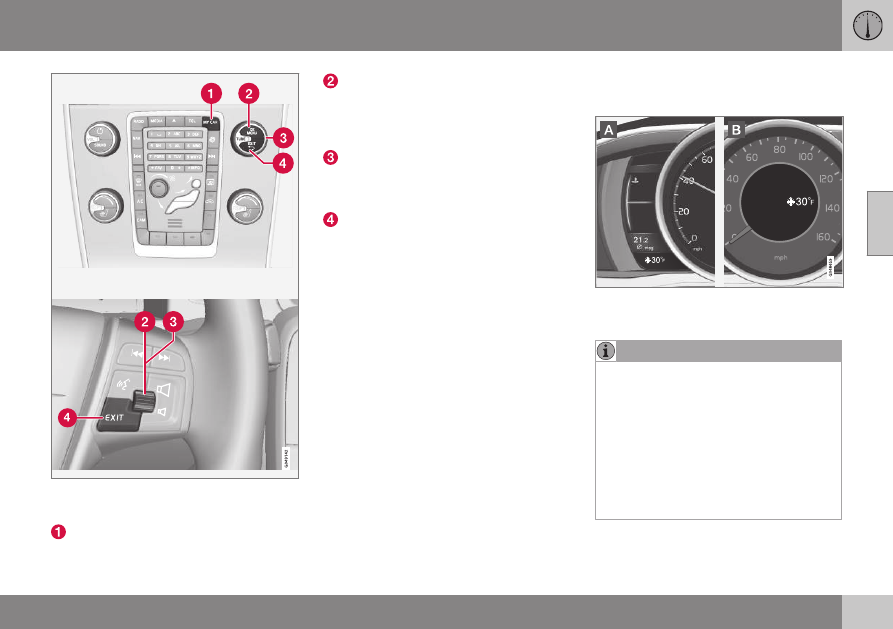Volvo XC70 (2016 year). Instruction - part 5

03 Instruments and controls
03
*
Option/accessory, for more information, see Introduction.
77
The center console control panel and the steer-
ing wheel keypad. The illustration is generic and
the appearance/location of the buttons may vary.
MY CAR: opens the MY CAR menu sys-
tem.
OK/MENU: Press the button on the cen-
ter console or the thumb wheel on the
steering wheel keypad to select a menu
alternative or to store a selected function
in the system's memory.
TUNE: Turn this control on the center
console or the thumb wheel on the steer-
ing wheel keypad to navigate up/down in
a menu.
EXIT
EXIT functions
Depending on which function the cursor is
pointing to and the menu level, briefly press-
ing EXIT will result in:
•
An in-coming phone call will be rejected
•
The current function will be cancelled
•
Characters entered will be erased
•
The most recent selection will be cancel-
led
•
Go back/up in the menu system
Pressing and holding EXIT takes you to the
normal view for MY CAR. If you are already in
normal view, this will take you to the main
source menu.
Menu selections and paths
Please consult your Sensus Infotainment sup-
plement for a description of the MY CAR
menu selections and paths.
Information displays – ambient
temperature sensor
Location of the ambient temperature sensor, A:
digital instrument panel*, B: analog instrument
panel
When the ambient temperature is between
23° and 36 °F (–5° and +2 °C), a snowflake
symbol will be displayed next to the tem-
perature. This symbol serves as a warning
for possible slippery road surfaces. Please
note that this symbol does not indicate a
fault with your vehicle.
At low speeds or when the vehicle is not
moving, the temperature readings may be
slightly higher than the actual ambient
temperature.
Related information
•